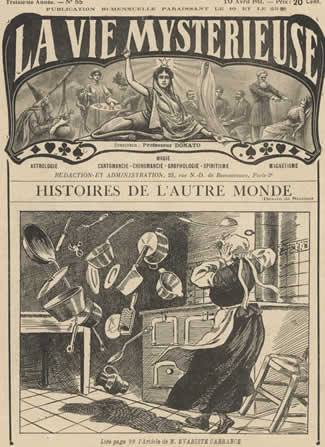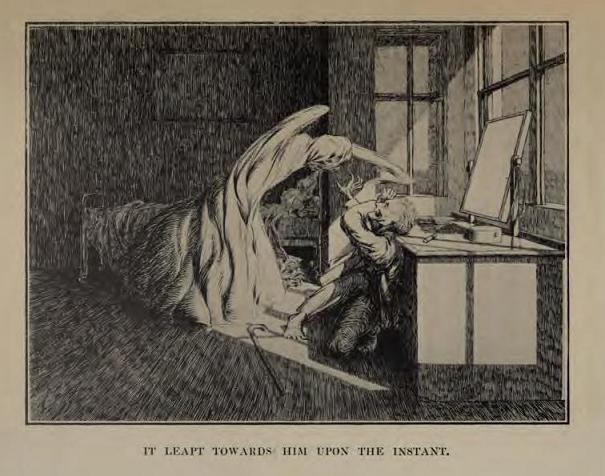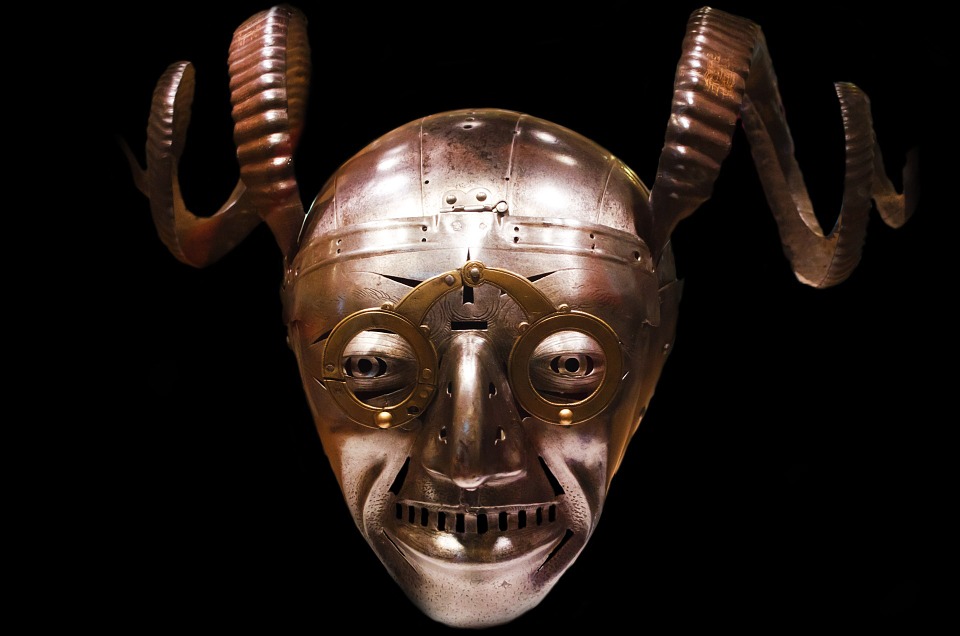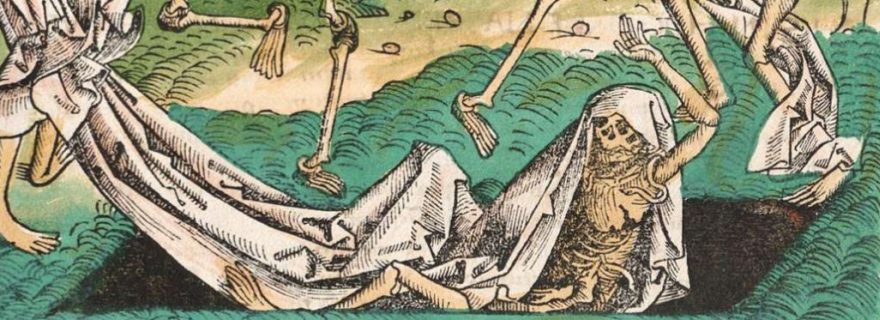Poltergeist pranks: More tales about the supernatural in medieval Italy
In this blog post we will look into a number of clever, but often cruel, practical jokes in which gullible victims, through a mix of staging and theatre, are made to believe that a ghost or demon is after them.
Medieval Italian literature is full of stories about the supernatural. In a previous blog post, we already came across an Edgar Allen Poe-esk gothic horror tale about a white lady, a comical tale about the ghost of a hangman, and a strange tale about a corpse, a priest, and a monkey. In these ghost stories, none of the walking dead or demons are real. Without exception, those people who (sometimes literally) shit themselves out of fear, are the victims of practical jokes devised by others for a wide range of motives.
“Could these be ghosts?”
Our first ghost story is a classic poltergeist tale, with invisible laughter and objects flying across the room. It can be found in Pietro Aretino’s masterpiece of satire, I Ragionamenti. This book is full of stories about courtesans using all kinds of tricks and pranks to cheat their customers. In one of them, a courtesan has grown very tired of one of her admirers, a merchant, and comes up with a cunning plan to scare him away. Having invited him to spend the night, she orders her maid to hide under the bed and make it seem like there is a ghost inside the room.
They dined and went to bed; and soon after they had put out the candle, indeed just as they were closing their eyes in the first sleep, lo and behold, a brick was thrown into the room and smashed everything. The courtesan clung to the merchant and moaned: “Oh my God!” Meanwhile the blanket was pulled off the bed and they were left almost completely naked; and as they pulled it back, a fusillade of laughs and cackles burst out. The merchant, hanging on by his teeth, whispered to her: “Could these be ghosts?”
The courtesan, pleased with his credulousness, then tells him a fable about a former suitor who hanged himself out of love for her. His jealous ghost now hunts her bedroom every time she allows another man to sleep with her. Upon hearing this, the merchant is terrified, and the next morning he orders the entire house to be blessed and exorcised from top to bottom with holy water and crosses. He also pays a priest to say Mass for the lover’s soul, in another attempt at expelling the ghost – according to the Catholic religion, ghosts were the lost souls of the dead who were trapped in Purgatory and could find relief through prayer. In the end, the trick does not have the desired effect: the idea that the ex-lovers’ ghost has turned his wrath on him, only further convinces the merchant in his delusion that the courtesan must really love him.


Early 20th century illustrations of ghost stories. Source: Wikimedia Commons.
The tale of the poltergeist priest
In a number of other stories, the poltergeist prank is taken even further. Victims are made to believe that their house is haunted, and apart from scary sounds and objects flying across the room as though moved by some invisible force, the pranksters dress up to look like actual ghosts or demons, with long white robes or a type of “devil’s costume”. Apart from these clothes, the pranksters are described as wearing horrifying masks, with artificial fire and smoke coming out of the mouths, eyes and horns. These masks seem to bear a close resemblance to those worn by theatrical actors. In the popular medieval mystery plays that represented stories from the Bible, masks were used to bring to life devils, demons, dragons, and personifications of the seven deadly sins. These masks could be ingeniously constructed to belch fire and smoke from hidden compartments.
Sometimes, the mask-bearers of the novella stories simply want to make a fool out of a credulous friend who is terrified of ghosts. At other times, this phobia is put to good use when a husband who is scared of the dark is terrorized to such an extent that he locks himself inside his bedroom – leaving his wife and her secret lover to do as they please. Once even, as is often the case with poltergeist-stories, the motive of the prankster has to do with the house itself. In a story by Matteo Bandello, a priest is very fond of the house of his neighbor. When he is unable to persuade this man to sell the house, he comes up with a clever scheme.
He had a devil’s dress made at Paris, after the most horrible and frightful fashion possible, and a mask set with two horns and so misshapen and hideous, so menacing and appalling of aspect, that it would have frightened the boldest and most assured man in all of France. With this disguise, he one night clad himself as a devil and filling his horns with artificial fire, made his way by roof into his neighbor’s house.
The priest then startles the entire house with his noises, throwing furniture around and howling. When the inhabitants finally find the courage to go up to the attic and see the monster breathing fire and smoke, they are sure that they have seen the devil. The neighbor and his household are terrified by the spectacle, and when word spreads around the town, many stories were told to explain the matter. Some said that the hauntings were caused by the death of a woman who had hung herself in the attic. Others said that it was the fault of a dead brother of the master of the house, who had never fulfilled his vows to go on a pilgrimage. When even the efforts of a friar sprinkling the entire house with holy water are to no avail, the poor man is finally forced to sell the house for half the value to the only one who is still interested in buying it – the priest.


Top: Modern devil/demon helmet. Source: MaxPixel. Bottom: Detail of Satan from Hans Memling's Triptych of Earthly Vanity and Divine Salvation (c. 1485). Source: Wikimedia Commons.
A student prank gone wrong
Another tale by Matteo Bandello has an even more tragic ending for the credulous victim of a poltergeist prank. In this story, three students prank another student who is head-over-heels in love with a woman who does not love him back. His “friends” convince him that, in order to force this woman into loving him, he has to use a very particular, rather morbid, type of love magic. First, the student must enter the grave of a dead man who has just been buried. He has to embrace the dead man’s body, kiss it on the lips, and ask his forgiveness. Afterwards, he must pull out three of the dead man’s teeth, two from the upper and one from the lower jaw, and two of his fingernails. The students convince him that once he has given them these items, they will take care of the rest. They will collect the other objects needed for the ritual, such as “virgin parchment inscribed with characters in bat’s blood”, and will then pound everything together and bury it. The moment his beloved will walk by the place where they have buried the objects, she will immediately be under his spell and declare her love for him. The unfortunate student, seeing no other option to cure his lovesick heart, agrees to do as they say. That same night he goes to the church and lowers himself into the grave to steal some teeth and finger nails. This is the moment the pranksters had been waiting for. One of them had already hidden himself down in the grave, dressed as a demon, and was ready to give the student the fright of his life:
This feigned demon, who had in his mouth I know not what, something resembling a nut full of artificial fire, sent forth a tongue of flame, and then another, and another one at once, and clutched the student in his arms, after which the latter, who was already more dead than alive, suffocated with extreme fear and died in his arms.
Shocked by how the joke had escalated and worried about retributions, the students quickly hide the dead body of their “friend” and flee from the city – determined never to use these types of pranks again.
.jpg)
Danse macabre with the dead emerging from their graves. Late 15th century German print. Source: Wikimedia Commons.
© Marlisa den Hartog and Leiden Medievalists Blog, 2019. Unauthorised use and/or duplication of this material without express and written permission from this site’s author and/or owner is strictly prohibited. Excerpts and links may be used, provided that full and clear credit is given to Marlisa den Hartog and Leiden Medievalists Blog with appropriate and specific direction to the original content.


